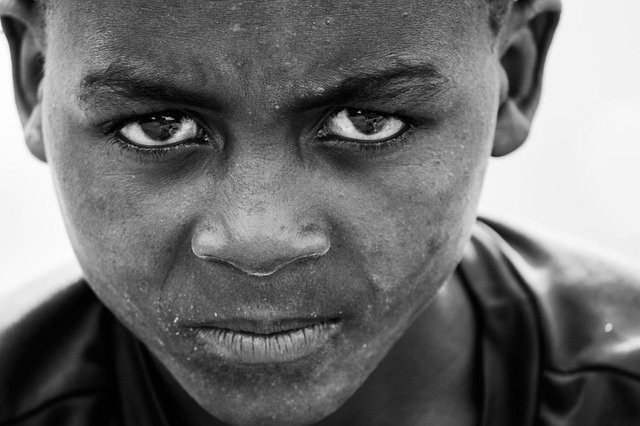A website is a key factor for any business or organisation, and it has to leave a lasting effect on the visitor.
This is especially true for a charity or not-for-profit website where you will need to make not just a lasting effect on the user, but also an emotional connection. To do this, you will need to consider incorporating the following features on your charity website:

1. Your mission and funding goal
The user needs to know what your overall goal of your charity is for them to get involved. This can come in many forms – it may be to raise a specific amount of money, to help a certain number of people or a radius of land covered. Whatever it is, the user will want to know what your goal is so that they can easily know what they are contributing towards.
These are often displayed in the form of a progress bar or counter – you can see an example of this on websites like Friends of Buburi who display the number of patients they have helped so far that year. This way, when people come back to the website they can see the progress that has been made and how close to the goal the charity is.
As well as a progress bar, this can also be displayed as a tagline or slogan on your website. For example – “Aiming to provide clean drinking water to 100,000 people in 2016”. This message is short and informative and instantly lets the visitor know what your objectives are.

2. How people can help
Lots of charities offer multiple ways for a benefactor to get involved. A regular method is via donations which we will discuss in point 5, but some may recruit volunteers offer their time to work towards the charity goal, send in clothes to be delivered to disadvantaged people and plenty more methods. An example of this is Ilamula House (run by The Winnie Mabaso Foundation) – their site offers many ways in which an interested party can get involved, ranging from clothing donations, books, toiletries, sponsorship, volunteering and more.
Ensure that all of your available options and clearly stated on your website so that a potential volunteer or sponsor does not miss the opportunity to provide aid.
These can be simply laid out using call to action boxes so the user can easily find and find out more about the particular service they are interested in.

3. The effect their help will have
This is a key part to securing a donation, volunteer or any other form of help. The benefactor will want to know how their money, goods or time are going to help the recipient, so be clear in letting people know what their money will be spent on, whether their second-hand clothes will go and what they will be doing if they decide to offer their time to help.
A great example of this in action is on the Save the Children website, particularly their ‘donate’ page. There are the options to donate either a single amount or recurring, monthly donations. When toggling these and the different amounts, there is accompanying text letting the donator know what their donation will help with. For example, a single donation of £100 “could buy water purification solution to give 1,000 people enough safe drinking water for five days.” Seeing the number of people that would be helped by your donation will register emotionally with the user and will be helpful in securing donations. Save the Children are also clear on where all of the money from donations go. “For every £1 we receive, we spend 88p on our activities to benefit children, 11p to raise the next £1 and 1p on governance and other costs.” This will establish extra trust in the charity so that you are fully aware of where your money is going, so this is a recommended practice if you do take donations via your charity website.

4. Photos of the beneficiaries
Images are a huge selling point on any website, no matter what the niche or topic at hand. In the case of a charity website, you need to make an emotional connection with the website visitor in order for them to be interested and help in whichever ways you are offering.
You will notice on television adverts for large charities such as Oxfam and UNICEF the inclusion of images and video of the beneficiaries – these are the disadvantaged people, children, animals or wildlife (depending on the charity) which will benefit from your donations or time.
Without seeing images of what you are helping to prevent, it can be difficult to engage on an emotional level. Oxfam regularly use video clips of extremely malnutritioned children, and it’s footage like this that really stands out to the viewer and opens their eyes to how serious the situation is. Without seeing a visual representation of the text on the website, this would be difficult for the user.

5. A donate button
Donations are a crucial factor for any charity – many rely on donations to continue the upkeep and general running of the charities, so it’s important that the ability to donate is easy to see and impactful on the website.
Many charities do this; Oxfam, WaterAid, Exeter Leukaemia Fund, NSPCC and Battersea Dogs & Cats Home all have a prominent ‘donate’ button on their website so that a user can donate money to the cause.
Donate buttons are usually situated in the header area of a website – this way, they’re on every page of the website and also one of the first things the user sees. This will keep it in the back of their mind at all times, so when the user has finished reading your content they then may make the decision to donate some money to you.
These will also often be a bright colour to stand out more on the page – many websites will use a contrasting colour to catch the eye of the reader. There will also often be a suggested donation amount – sometimes there will be multiple options of £5, £10, £20 and so on, but remember to include the option to set your own amount, as well as recurring payments for loyal donators.

6. Ongoing progress updates
Blogs are great for a number of reasons. People love to know what’s happening at a business or charity, whether it be events or ‘behind the scenes’ activities, and these are also fantastic for search engine optimisation.
For a charity, a blog would be a great way to keep benefactors and interested parties up to date on what’s happening at the organisation, as well as progress updates on donations, people helped and so on. These can include images of the charities work, as well as volunteer diaries, yearly overviews and many more topics.
This is a great way to promote the work your charity does, and can also be excellent shareable content on social media platforms as people love to read feel-good stories with a positive outcome.
Content like this will be shared widely by people who take an interest in your charity and work – this will be great for bringing more traffic back to your website and potential donators.

